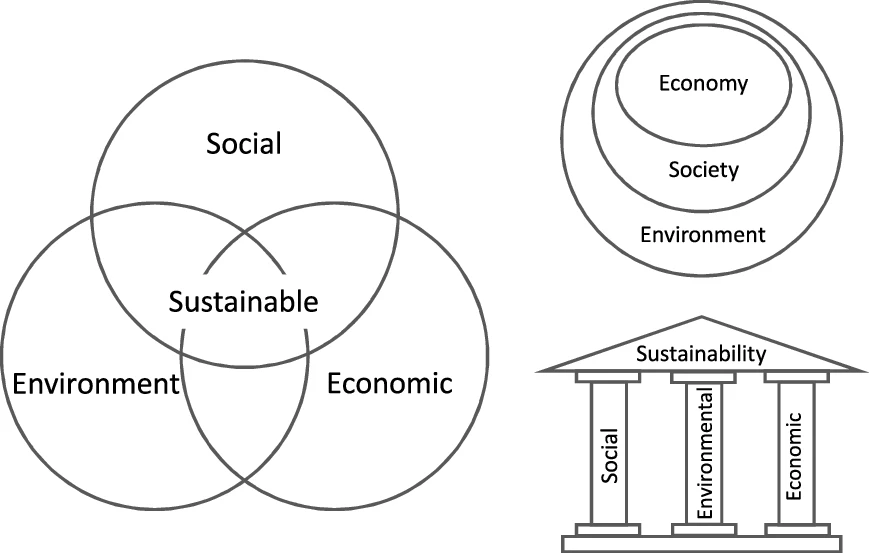|
Retraining
Retraining, refresher training, or upskilling is the process of learning a new or the same old skill or trade for the same group of personnel. Retraining is required to be provided on a regular basis to avoid personnel obsolescence due to technological changes and the individuals' memory capacity. This short-term instruction course shall serve to re-acquaint personnel with skills previously learnt (recall to retain the potentials) or to bring their knowledge or skills up-to-date (latest) so that skills stay sharp. This kind of training could be provided annually or more frequently as maybe required, based on the importance of consistency of the task of which the skill is involved. Examples of refreshers are cGMP, GDP, HSE trainings. Retraining (repetition of a training conducted earlier) shall also be conducted for an employee, when the employee is rated as ‘not qualified’ for a skill or knowledge, as determined based on the assessment of answers in the training questionnair ... [...More Info...] [...Related Items...] OR: [Wikipedia] [Google] [Baidu] |
Trade Adjustment Assistance
Trade Adjustment Assistance (TAA) is a federal program of the United States government to act as a way to reduce the damaging impact of imports felt by certain sectors of the U.S. economy. The current structure features four components of Trade Adjustment Assistance: for workers, firms, farmers, and communities. Each cabinet-level department was tasked with a different sector of the overall Trade Adjustment Assistance program. The program for workers is the largest, and is administered by the U.S. Department of Labor. The program for farmers is administered by the U.S. Department of Agriculture, and the firms and communities programs are administered by the U.S. Department of Commerce. A 2020 study found that counties with a history of successful petitions for trade adjustment assistance were less likely to support protectionism and were more likely to support Democratic candidates in the future. History Trade Adjustment Assistance consists of four programs authorized under th ... [...More Info...] [...Related Items...] OR: [Wikipedia] [Google] [Baidu] |
Technological Unemployment
The term technological unemployment is used to describe the loss of jobs caused by technological change. It is a key type of structural unemployment. Technological change typically includes the introduction of labour-saving "mechanical-muscle" machines or more efficient "mechanical-mind" processes (automation), and humans' role in these processes are minimized. Just as horses were gradually made obsolete as transport by the automobile and as labourer by the tractor, humans' jobs have also been affected throughout modern history. Historical examples include Textile manufacture during the Industrial Revolution, artisan weavers reduced to poverty after the introduction of Power loom, mechanized looms. Thousands of man-years of work was performed in a matter of hours by the bombe codebreaking machine during World War II. A contemporary example of technological unemployment is the displacement of retail cashiers by Self-checkout, self-service tills and cashierless stores. That techn ... [...More Info...] [...Related Items...] OR: [Wikipedia] [Google] [Baidu] |
Refresher Training
Refresher training is an aspect of retraining taken by a person already qualified or previously assessed as competent in a field with the intention of updating skills and/or knowledge to a changed standard, or providing the opportunity to ensure that no important skills or knowledge have been lost due to lack of use. In industry it is also used to upgrade performance of personnel faced with workplace changes or who use obsolete, deprecated, or outdated work procedures, as a method for improving productivity, customer service, employee satisfaction and retention, and workplace health and safety. Fields of application * Airline pilots *General commerce and industry * Military reserve personnel *Medical specialists *Paramedic and first aid responders *Rescue and emergency response personnel *Teachers *Underwater diving **Professional diving – First aid qualifications required for members of a professional diving team are generally valid for a limited period in the order of two or ... [...More Info...] [...Related Items...] OR: [Wikipedia] [Google] [Baidu] |
Offshoring
Offshoring is the relocation of a business process from one country to another—typically an operational process, such as manufacturing, or supporting processes, such as accounting. Usually this refers to a company business, although state governments may also employ offshoring. More recently, technical and administrative services have been offshored. Offshoring neither implies nor precludes involving a different company to be responsible for a business process. Therefore, offshoring should not be confused with outsourcing which does imply one company relying on another. In practice, the concepts can be intertwined, i.e offshore outsourcing, and can be individually or jointly, partially or completely reversed, as described by terms such as reshoring, inshoring, and insourcing. In-house offshoring is when the offshored work is done by means of an internal (captive) delivery model. Imported services from subsidiaries or other closely related suppliers are included, whereas in ... [...More Info...] [...Related Items...] OR: [Wikipedia] [Google] [Baidu] |
Sustainability
Sustainability is a social goal for people to co-exist on Earth over a long period of time. Definitions of this term are disputed and have varied with literature, context, and time. Sustainability usually has three dimensions (or pillars): environmental, economic, and social. Many definitions emphasize the environmental dimension. This can include addressing key environmental problems, including climate change and biodiversity loss. The idea of sustainability can guide decisions at the global, national, organizational, and individual levels. A related concept is that of sustainable development, and the terms are often used to mean the same thing. UNESCO distinguishes the two like this: "''Sustainability'' is often thought of as a long-term goal (i.e. a more sustainable world), while ''sustainable development'' refers to the many processes and pathways to achieve it." Details around the economic dimension of sustainability are controversial. Scholars have discussed this under ... [...More Info...] [...Related Items...] OR: [Wikipedia] [Google] [Baidu] |
Standardization
Standardization (American English) or standardisation (British English) is the process of implementing and developing technical standards based on the consensus of different parties that include firms, users, interest groups, standards organizations and governments. Standardization can help maximize compatibility, interoperability, safety, repeatability, efficiency, and quality. It can also facilitate a normalization of formerly custom processes. In social sciences, including economics, the idea of ''standardization'' is close to the solution for a coordination problem, a situation in which all parties can realize mutual gains, but only by making mutually consistent decisions. Divergent national standards impose costs on consumers and can be a form of non-tariff trade barrier. History Early examples Standard weights and measures were developed by the Indus Valley civilization.Iwata, Shigeo (2008), "Weights and Measures in the Indus Valley", ''Encyclopaedia of the History ... [...More Info...] [...Related Items...] OR: [Wikipedia] [Google] [Baidu] |
Labor Shortage
In economics, a shortage or excess demand is a situation in which the demand for a product or service exceeds its supply in a market. It is the opposite of an excess supply ( surplus). Definitions In a perfect market (one that matches a simple microeconomic model), an excess of demand will prompt sellers to increase prices until demand at that price matches the available supply, establishing market equilibrium. In economic terminology, a shortage occurs when for some reason (such as government intervention, or decisions by sellers not to raise prices) the price does not rise to reach equilibrium. In this circumstance, buyers want to purchase more at the market price than the quantity of the good or service that is available, and some non-price mechanism (such as "first come, first served" or a lottery) determines which buyers are served. So in a perfect market the only thing that can cause a shortage is price. In common use, the term "shortage" may refer to a situation wh ... [...More Info...] [...Related Items...] OR: [Wikipedia] [Google] [Baidu] |
Intelligent Tutoring System
An intelligent tutoring system (ITS) is a computer system that imitates human tutors and aims to provide immediate and customized instruction or feedback to learners, usually without requiring intervention from a human teacher. ITSs have the common goal of enabling learning in a meaningful and effective manner by using a variety of computing technologies. There are many examples of ITSs being used in both formal education and professional settings in which they have demonstrated their capabilities and limitations. There is a close relationship between intelligent tutoring, cognitive learning theories and design; and there is ongoing research to improve the effectiveness of ITS. An ITS typically aims to replicate the demonstrated benefits of one-to-one, personalized tutoring, in contexts where students would otherwise have access to one-to-many instruction from a single teacher (e.g., classroom lectures), or no teacher at all (e.g., online homework). ITSs are often designed with t ... [...More Info...] [...Related Items...] OR: [Wikipedia] [Google] [Baidu] |
Efficiency
Efficiency is the often measurable ability to avoid making mistakes or wasting materials, energy, efforts, money, and time while performing a task. In a more general sense, it is the ability to do things well, successfully, and without waste. In more mathematical or scientific terms, it signifies the level of performance that uses the least amount of inputs to achieve the highest amount of output. It often specifically comprises the capability of a specific application of effort to produce a specific outcome with a minimum amount or quantity of waste, expense, or unnecessary effort.Sickles, R., and Zelenyuk, V. (2019).Measurement of Productivity and Efficiency: Theory and Practice. Cambridge: Cambridge University Press. . Efficiency refers to very different inputs and outputs in different fields and industries. In 2019, the European Commission said: "Resource efficiency means using the Earth's limited resources in a sustainable procent manner while minimising impacts on the envi ... [...More Info...] [...Related Items...] OR: [Wikipedia] [Google] [Baidu] |
Workfare
Workfare is a governmental plan under which welfare recipients are required to accept public-service jobs or to participate in job training. Many countries around the world have adopted workfare (sometimes implemented as "work-first" policies) to reduce poverty among able-bodied adults; however, their approaches to execution vary. The United States and United Kingdom are two countries utilizing workfare, albeit with different backgrounds. Background Workfare was first introduced by civil rights leader James Charles Evers in 1968; however, it was popularized by Richard Nixon in a televised speech August 1969. An early model of workfare had been pioneered in 1961 by Joseph Mitchell in Newburgh, New York. Traditional welfare benefits systems are usually awarded based on certain conditions, such as searching for work, or based on meeting criteria that would position the recipient as unavailable to seek employment or be employed. Under workfare, recipients have to meet certain pa ... [...More Info...] [...Related Items...] OR: [Wikipedia] [Google] [Baidu] |
Personality Types
In psychology, personality type refers to the psychological classification of individuals. In contrast to personality traits, the existence of personality types remains extremely controversial. Types are sometimes said to involve ''qualitative'' differences between people, whereas traits might be construed as ''quantitative'' differences. According to type theories, for example, introverts and extraverts are two fundamentally different categories of people. According to trait theories, introversion and extraversion are part of a continuous dimension, with many people in the middle. Clinically effective personality typologies Effective personality typologies reveal and increase knowledge and understanding of individuals, as opposed to diminishing knowledge and understanding as occurs in the case of stereotyping. Effective typologies also allow for increased ability to predict clinically relevant information about people and to develop effective treatment strategies. There is an exte ... [...More Info...] [...Related Items...] OR: [Wikipedia] [Google] [Baidu] |


